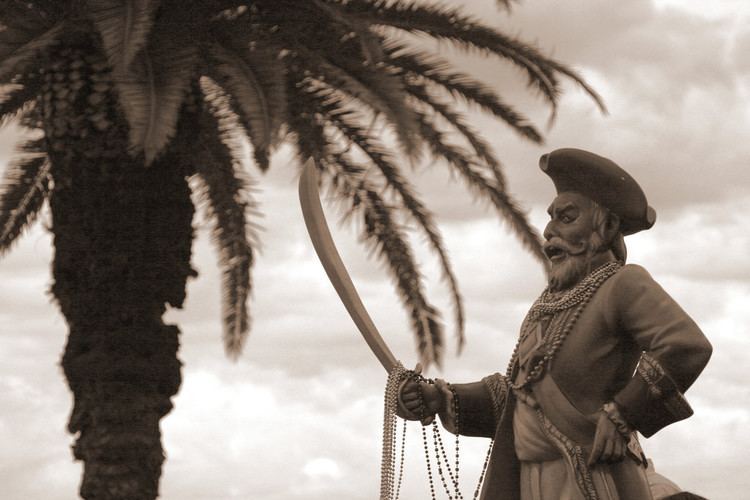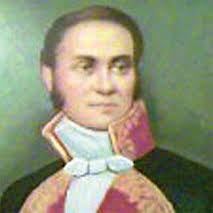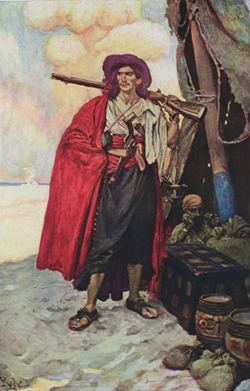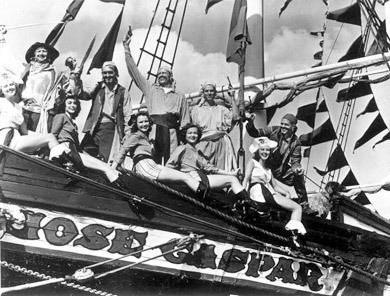Died 1821 | ||
 | ||
Similar Amaro Rodriguez Felipe, Alonso de Contreras, Cabeza de Perro | ||
José Gaspar, known by his nickname Gasparilla (supposedly lived c. 1756 – 1821), is an apocryphal Spanish pirate, the "last of the Buccaneers," who is claimed to have roamed the Gulf of Mexico and the Spanish Main from his base in southwest Florida during the late 18th and early 19th centuries. Though he is a popular figure in Florida folklore, no mention of Gaspar appears in writing before the early 20th century, and no archival or physical evidence of his existence has ever been found.
Contents

José Gaspar's legend is celebrated every year in Tampa with the Gasparilla Pirate Festival, which was first held in 1904.

Legend

The details of José Gaspar's life and career vary in different tellings, especially with regard to his origin. Most say that Gaspar was born in Spain in 1756 and served in the Spanish Navy, only to desert and turn to piracy in 1783. In some versions of the story, he began life as a troubled youth who kidnapped a young girl for ransom. Captured and given the choice between prison and joining the navy, Gaspar went to sea, where he served with distinction for several years before leading a mutiny against a tyrannical captain and fleeing to Florida.

In other versions, Gaspar was a Spanish nobleman who achieved a high rank in the Spanish navy and became a councillor to King Charles III. He was popular in the court, but when he spurned one lover for another, the jilted lady levied false charges against him, often said to involve the theft of the crown jewels. Facing arrest, he commandeered a ship and vowed to exact revenge on his country.
In all versions, the renegade fled to the virtually uninhabited west coast of Spanish Florida about 1783 and turned to piracy aboard his ship, the Floriblanca. Gaspar established his base on Gasparilla Island and was soon the feared scourge of the eastern Gulf of Mexico, where he plundered dozens of ships and amassed a huge cache of treasure in the period coinciding with the second Spanish rule of Florida. Most male prisoners would be put to death or recruited as pirates, while women would be taken to a nearby isle (called Captiva Island for this reason), where they would serve as his concubines, become the wives of his pirate crew, or await ransom payment from their families.
Different versions of Gaspar's legend relate different episodes in his piratical career. One of the most famous involves a Spanish (or Mexican) princess Gaspar had captured. Allegedly named Useppa, she consistently rejected the pirate's advances until he threatened to behead her if she would not submit to his lust. Still she refused, and he killed her in a rage (or alternately because his crew demanded her death). The captain instantly regretted the deed and took her body to a nearby island, which he named Useppa in her honor, and buried her himself. Some versions identify the lady with Josefa de Mayorga, daughter of Martín de Mayorga, viceroy of New Spain from 1779 to 1782, and contend that the island's name evolved over time. Similarly, Sanibel Island is said to have been named by Gaspar's first mate, Roderigo Lopez, after his lover whom he had left back in Spain. Empathizing with his friend's plight, Gaspar eventually allowed Lopez to return home, and even trusted him with his personal log. Sanibel Island re-emerges in other stories as the headquarters of the mythical Haitian pirate Black Caesar, for whom there is also little to no historical evidence.
The legends agree that José Gaspar met his end in December 1821, soon after Spain transferred control of the Florida Territory to the United States. Gasparilla had decided to retire after almost 40 years of plunder, and he and his crew were dividing his vast treasure at his base on Gasparilla Island. During this process, the lookout spotted what looked like a fat British merchant ship, an opportunity too good to pass up. But as they approached in the Floriblanca, the intended victim raised an American flag, revealing that this was no merchant vessel, but the United States Navy pirate hunting schooner USS Enterprise. In the battle that followed, Gaspar's ship was riddled by cannonballs and in danger of sinking. Rather than surrender, he supposedly wrapped an anchor chain around his waist and dramatically leapt from the bow, shouting "Gasparilla dies by his own hand, not the enemy's!" Most of his surviving crew were captured and subsequently hanged, but a few escaped. In some versions of the story, one of these survivors was Juan Gómez, who would tell the tale to subsequent generations.
Plausibility
Though his story has been retold in many forms since its first appearance in 1900, there is no evidence that José Gaspar ever existed. Research in Spanish archives have turned up no mention of his early life, his time with the Spanish court, or his career in the Spanish navy. Academic searches of United States Navy records and contemporary newspaper archives have found no mention of the name "Gaspar" / "Gasparilla" or of a pirate ship called Floriblanca in ships' logs, trial records and printed accounts, or in the official court testimony of hundreds of prisoners tried for piracy during the era when Gaspar was supposedly the most feared pirate of the Gulf Coast. While the USS Enterprise was assigned to the West Indies Squadron tasked with suppressing piracy in the Caribbean, it had been converted into a brig by the time of its supposed battle with Gaspar, and is documented to have been in Cuba in December 1821, not in Charlotte Harbor, where Gaspar's last battle is said to have taken place.
Most tellingly, no physical evidence of Gaspar's presence has ever been found on Gasparilla Island or anywhere else in southwest Florida. In fact, there was little documented piracy on Florida's west coast during Gaspar's supposed heyday because there were no established settlements in the area and thus few merchant ships carrying the easily liquidated cargo favored by pirates.
Gasparilla Pirate Festival
In 1904, members of the Tampa business elite staged a theatrical pirate "invasion" of their city based on the increasingly popular figure of Gasparilla during the city's previously sedate May Day celebration. Under the guise of "Ye Mystic Krewe of Gasparilla", an organization modeled after the New Orleans Mardi Gras parade krewes, the invaders donned pirate costumes and rode through the streets on horseback. The event was a hit, and the Krewe planned an even more elaborate spectacle the next year, when all 60 of Tampa's cars were paraded through downtown. The first seaborne "invasion" came in 1911, and has been repeated almost every year since.
Tampa now hosts many Gasparilla-themed events from January to March, but the focal point is still an "invasion" by José Gaspar and his crew, which currently takes place on the last Saturday in January. Members of Ye Mystic Krewe of Gasparilla, accompanied by a flotilla of hundreds of private boats, sail across Tampa Bay to downtown Tampa on the José Gasparilla, a 165' long "pirate" ship which was specially built for this purpose in 1954. The mayor of Tampa then hands over the key of the city to the pirate captain and a "victory parade" ensues down Bayshore Boulevard. Dozens of other Krewes have joined the festivities over the years, and an average of over 300,000 people attend the event, which contributes over $20 million to the local economy.
